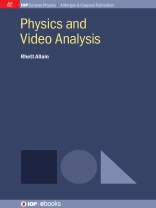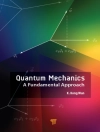We currently live in a world filled with videos. There are videos on You Tube, feature movies and even videos recorded with our own cameras and smartphones. These videos present an excellent opportunity to not only explore physical concepts, but also inspire others to investigate physics ideas.
With video analysis, we can explore the fantasy world in science-fiction films. We can also look at online videos to determine if they are genuine or fake. Video analysis can be used in the introductory physics lab and it can even be used to explore the make-believe physics embedded in video games.
This book covers the basic ideas behind video analysis along with the fundamental physics principles used in video analysis. The book also includes several examples of the unique situations in which video analysis can be used.
Inhoudsopgave
Table of Contents: Preface / Introduction to video analysis / Choosing and finding appropriate videos for analysis / Video Analysis and basic projectile motion / Video analysis and perspective correction / Using angular size / Using an object’s shadow to determine position / Detecting fake videos / Video analysis of spin during the Red Bull Stratos jump / Analysis of an NFL flop / Running the loop the loop / Video analysis of the speeder in Star Wars VII trailer
Over de auteur
Rhett Allain is an associate professor of physics at Southeastern Louisiana University. He received his Ph D from North Carolina State University in 2001. He is the author of the WIRED magazine science blog Dot Physics. Dr Allain’s research interests are in the field of Physics Education Research (PER), which explores how students understand physics. This typically leads to the development of new curriculum and instructional techniques. Dr Allain is interested in physics for elementary teachers, computational methods in introductory physics and student understanding of the nature of science.












